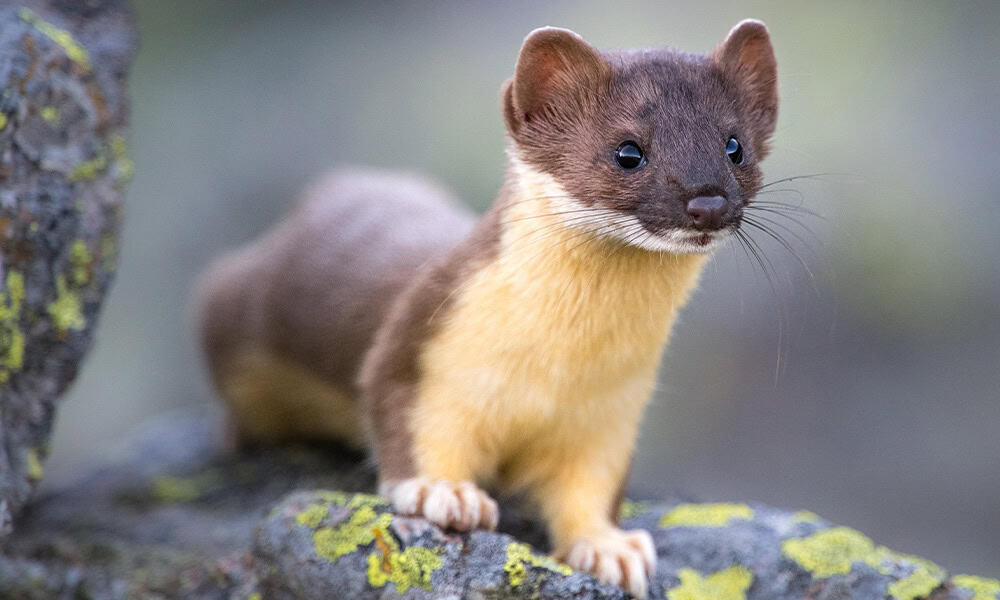Today we meet the long-tailed weasel, a high-energy predator that may be dancing for two very different reasons.The long-tailed weasel (Mustela frenata) is known as the comadreja de cola larga or more simply the comadreja in Spanish. They are one of the seven members of the weasel family to call Costa Rica home and by far the tiniest. An adult long-tailed weasel tops out at eight inches long and weighs a svelte five ounces.
Long-tailed weasels have a pretty incredible range. They’re found from southern Canada, throughout the US, Mexico, and Central America and down into Bolivia in South America. Their coats are slightly different in different parts of their range. In cold climates, their mostly brown fur turns pure white to blend in with the snow. In Costa Rica, they’re dark brown on top and a lighter, creamy-brown on the underside of their bodies. They’re found throughout much of Costa Rica but are absent from Guanacaste and much of the rest of the Pacific coast.
Though they are small in stature, they are quite aggressive hunters and are capable of taking down prey several times larger than themselves. They have two major modes of hunting; one used above ground, and one used below ground. Above ground they search for prey on the forest floor and amongst the branches of the trees. The animals they find there, including birds, rabbits, bats, frogs, and reptiles, are quickly dispatched with a bite to the back of the neck. Animals hunted in tunnels below the ground, mostly rodents, are more frequently suffocated with a bite to the throat. These weasels have an usually high metabolic rate and need to eat a significant amount of prey each day.
Long-tailed weasels have gained a reputation of being quite high-strung due to their constant movement in search of prey. They add to this stereotype of constant motion by performing wild dances. Biologists have reported seeing them erratically dancing in front of prey, presumably mesmerizing them and allowing the weasel to get close for an attack. The trick is, they’ve also been observed doing their crazy dances without any other animals in attendance. The hypothesis for the audience-less dancing is that their dance moves are actually a reaction to the discomfort of parasitic worms wriggling around in their nasal cavities.
I have a particular interest in the members of the weasel family. A camera trap video or sighting of a tayra or grison are always reasons to celebrate. The few videos of neotropical river otters that I’ve ever recorded are some of my favorites. Heck, I’m even happy with skunk interactions. Long-tailed weasels are no exception, though I’ve never gotten to see one in person, and I’ve only recorded one camera trap video of one that lasted all of two seconds. Take a few seconds, watch the video below, and catch a fleeting glimpse of the long-tailed weasel.
About the Author
Vincent Losasso, founder of Guanacaste Wildlife Monitoring, is a biologist who works with camera traps throughout Costa Rica.







